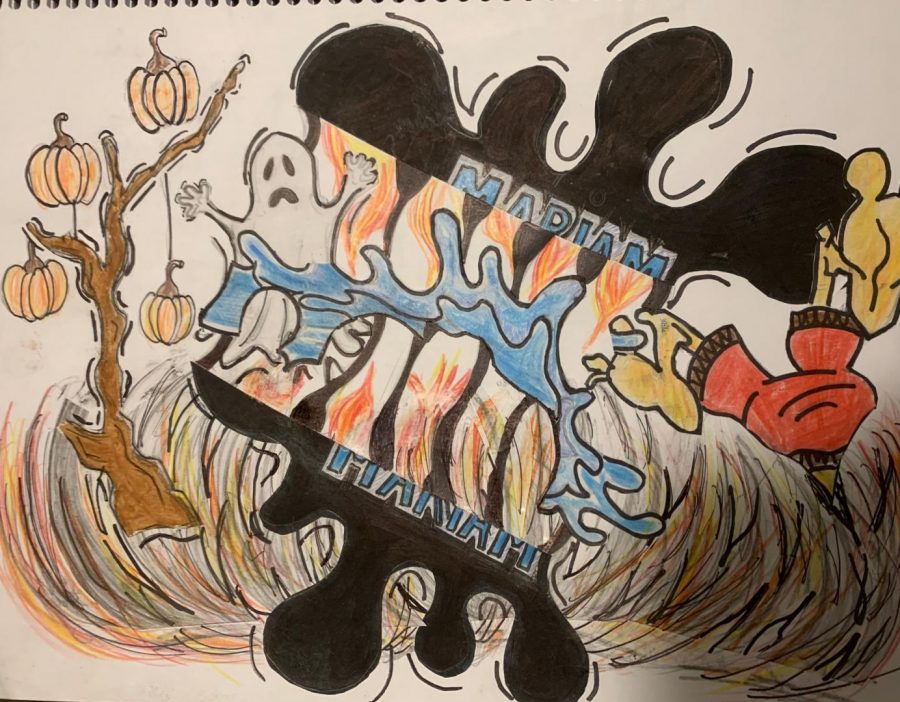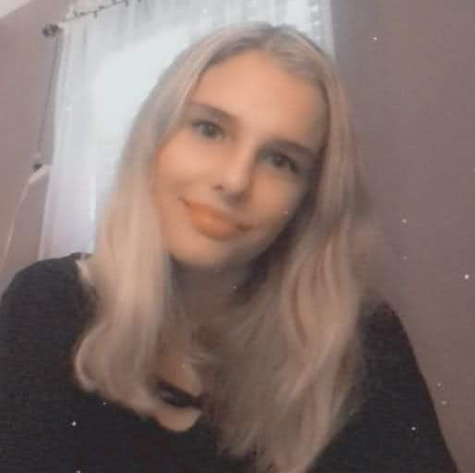The Origins of Halloween
“Crème de la crème” artwork by Mariam B from Ms. Gavin’s Intermediate Art
October 27, 2020
The story of Halloween began long ago with an ancient Celtic festival of Samhain. The Celts, who lived 2,000 years ago, lived mostly in the area that is now Ireland. The tradition originated when people would light bonfires and wear costumes to ward off ghosts. The evening was originally known as All Hollows Eve and it began on the 1st of November.
November 1st was the day that harvest began and summer came to an end. This day was about connecting the living world with the dead and it was very much like the day of the dead, but it had its own name, known as All Hollows Eve until it eventually became Halloween. People believed that on the night of October 31st the dead would cross over to the side of the living and reunite with their lost loved ones.
The Celts believed that the presence of the sprits on All Hollows Eve made it easier to make predictions about the future. The prophecies were a source of comfort for the Celts during the upcoming harsh and brutal winter. The celebration also consists of the druids who are more commonly known as fortune-tellers who would start huge sacred bonfires so the people could gather around the fire to burn crops and animals for sacrifices to the Celtic deities.
At this celebration the people would wear costumes that typically had animals head and animal skins within their costumes. People also would try to tell one another’s fortunes. After the night was over, they would re-lit the fires to help protect them from the winter to come.
Halloween first started in other countries, but the holiday eventually came to America. In the early days of American Halloween, Maryland and other colonies celebrated Halloween more than New England. Some in New England didn’t celebrate the holiday because of their belief system. When the ethnic groups of Europe began to change their customs and beliefs, they began to celebrate with American Indians with parties that included dancing, singing, and fortune telling
People used to also tell ghost stories and make mischief at the celebrations. By the 19 century Autumn festivities happened yearly at that time. However, Halloween was still only known in some countries. When America had more new immigrants come to the country, as they saw the holiday celebrations that came with Halloween, they tried to spread the story and customs that come with Halloween and the obviously stuck as here we are in the 21st century still celebrating Halloween.
Between the 1920’s and 1950’s trick or treating was revived. Trick or treating was an inexpensive way for people to share the Halloween experience or celebrations. In theory people used to prevent tricks being played on them by providing the children with small treats or candy. Halloween started over 2,000 years ago with All Hollows Eve traditions and continued with the present day Halloween tradition.
Source: “Halloween 2020” History.com. 19 November 2009. Web. Accessed 25 October 2020.

